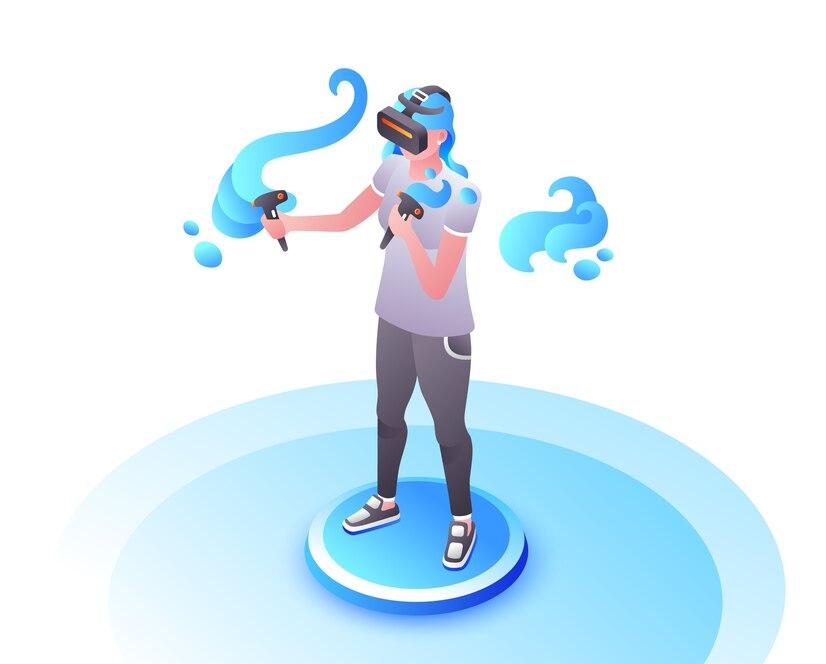Introduction to Extended Reality (XR)
Extended Reality (XR) is an umbrella term encompassing Virtual Reality (VR), Augmented Reality (AR), and Mixed Reality (MR). It blends the physical and digital worlds, creating immersive experiences that transform how we interact with technology. XR is revolutionizing industries like gaming, education, healthcare, and retail by offering innovative solutions. From virtual training simulations to augmented shopping experiences, XR is reshaping our daily lives. As technology advances, XR is becoming more accessible, paving the way for a future where digital and physical realities seamlessly coexist.
The Components of Extended Reality
XR comprises three main technologies: VR, AR, and MR. Virtual Reality immerses users in a fully digital environment, often using headsets like the Oculus Rift. Augmented Reality overlays digital elements onto the real world, as seen in apps like Pokémon Go. Mixed Reality combines both, allowing digital objects to interact with the physical world in real-time. Each component serves unique purposes, from entertainment to professional training. Together, they form the foundation of XR, offering endless possibilities for innovation and application across various sectors.
Applications of XR in Education
Extended Reality is transforming education by making learning more interactive and engaging. VR allows students to explore historical sites or conduct virtual science experiments. AR enhances textbooks with 3D models and animations, making complex concepts easier to understand. MR enables collaborative learning, where students and teachers can interact with digital content in real-time. These technologies cater to different learning styles, improving retention and comprehension. XR also provides access to remote learning opportunities, bridging gaps in education and offering immersive experiences that were previously unimaginable.
XR in Healthcare: A Game-Changer
In healthcare, XR is revolutionizing patient care and medical training. Surgeons use VR to practice complex procedures in a risk-free environment, improving precision and outcomes. AR assists in real-time during surgeries by overlaying critical information onto the patient’s body. MR is used for physical therapy, helping patients regain mobility through interactive exercises. XR also aids in mental health treatment, offering immersive therapies for conditions like PTSD and anxiety. By enhancing diagnostics, treatment, and training, XR is setting new standards in healthcare and improving the quality of life for patients worldwide.
The Role of XR in Entertainment and Gaming
The entertainment industry has embraced XR to create immersive experiences that captivate audiences. VR gaming transports players into fantastical worlds, offering unparalleled levels of engagement. AR games like Pokémon Go blend digital elements with the real world, encouraging social interaction and physical activity. MR is used in live events, such as concerts, to enhance performances with holographic effects. XR is also transforming storytelling, allowing users to become part of the narrative. As technology evolves, XR is pushing the boundaries of creativity, offering new ways to entertain and connect with audiences.
XR in Retail: Enhancing Customer Experiences
Retailers are leveraging XR to provide personalized and interactive shopping experiences. AR apps allow customers to visualize products like furniture or clothing in their homes before purchasing. VR enables virtual showrooms, where users can explore products in a 3D space. MR enhances in-store experiences by offering interactive displays and virtual assistants. These technologies streamline the decision-making process, reduce returns, and increase customer satisfaction. By integrating XR, retailers are bridging the gap between online and offline shopping, creating a seamless and engaging journey for consumers.
Challenges and Future of Extended Reality
Despite its potential, XR faces challenges like high costs, technical limitations, and privacy concerns. Developing immersive content requires significant investment, and hardware can be expensive for consumers. Motion sickness and limited battery life are ongoing issues. However, advancements in AI, 5G, and wearable technology are addressing these barriers. As XR becomes more affordable and accessible, its adoption is expected to grow exponentially. The future of XR promises even more realistic and interactive experiences, transforming how we work, learn, and play in the digital age.
Conclusion: Embracing the XR Revolution
Extended Reality is no longer a futuristic concept; it’s a present-day reality reshaping industries and daily life. From education and healthcare to entertainment and retail, XR is unlocking new possibilities and driving innovation. While challenges remain, the potential benefits far outweigh the obstacles. As technology continues to evolve, XR will become an integral part of our lives, offering immersive experiences that redefine human interaction with the digital world. Embracing this revolution will open doors to endless opportunities, making the impossible possible and transforming the way we perceive reality.

